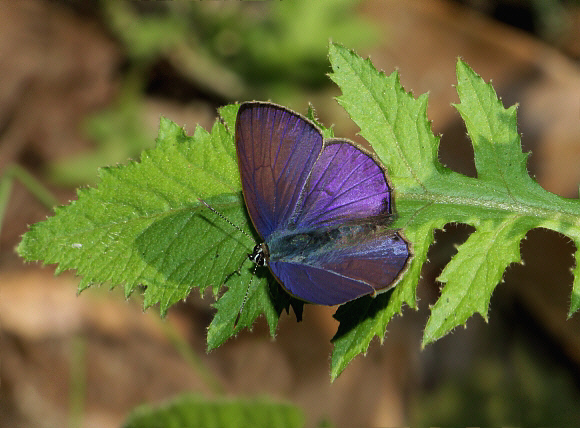
Introduction
Members of the tribe Polyommatini are characterised by being small in size, and marked on the underside with a pattern of small spots or striations. The uppersides of males are in most species covered in metallic blue scales, while females are predominantly dull earthy brown in colouration.
The tribe has worldwide distribution and contains such familiar species as the Pea Blue Lampides boeticus, Chalkhill Blue Polyommatus coridon, African Tiger Blues Tarucus spp; and Oriental genera including Castalius, Zizeeria, Nacaduba and Jamides.
The genus Prosotas contains about 20 species, distributed variously from India to the Philippines, Malaysia, Indonesia and Australia. On the upperside the males of all species are deep iridescent purple-blue in colour. The females of most species are dark brown with a few pale blue scales at the base of the wings. Most species possess a single short tail on the hindwing, the exception being dubiosa which is tailless. The undersides of all species are similar, being earthy brown with pale-edged maculae.
Prosotas dubiosa is a common and very widespread species, found in India, Sri Lanka, Myanmar, China, Thailand, Malaysia, Indonesia, Papua New Guinea and eastern Australia.
Habitats
This butterfly occurs in disturbed evergreen and deciduous forest habitats at altitudes between sea level and about 800m.
Lifecycle
The caterpillars feed on Archidendron, Cajanus, Dalbergia ( Fabaceae ), Acacia ( Mimosaceae ), and Litchi ( Sapindaceae )
Adult behaviour
Males are commonly found imbibing mineralised moisture from damp soil or leaf-litter on the forest floor. Both sexes are commonly seen flying around flowering bushes in forest clearings and forest-edge habitats. They often rest on foliage at a height of about 1m on bushes in dappled sunlight.
